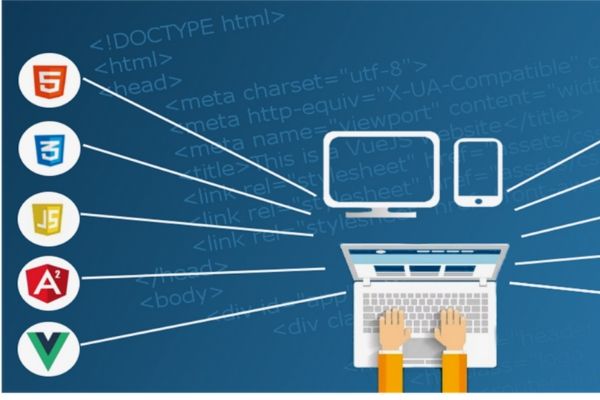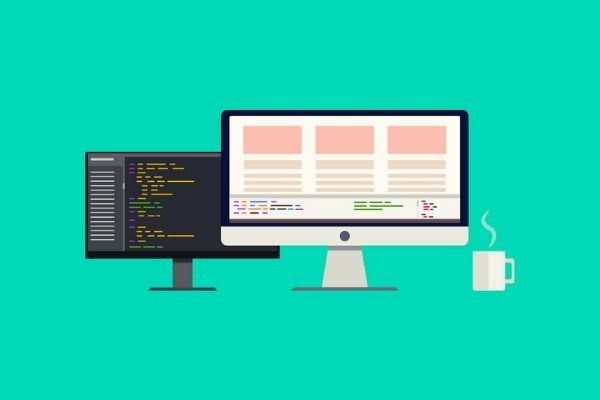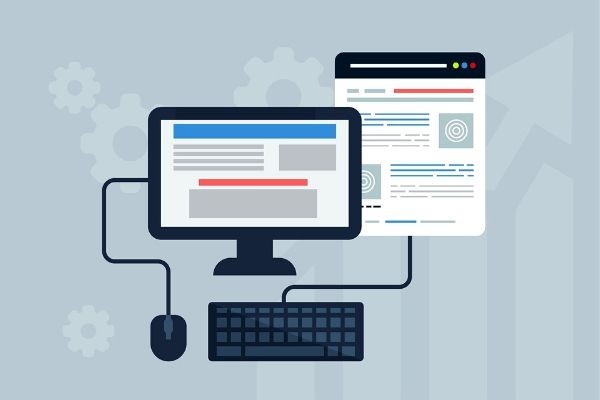Have you heard people talking about front end vs back end programmers? Have you wondered exactly what the difference was? You know that a front-end programmer is concerned with the user and that the back-end developers are focused on what happens behind the scenes.
You also know that’s just the tip of the iceberg when it comes to being either a front-end or back-end programmer in the software development career sector.
Back-end programmers work on the functionality of an application. They have an understanding of servers, applications and databases. Their interests are in improving performance and adding functionality to an application. Their job is about what can’t be seen by the end-user.
Front-end development focuses on the user. Front-end programmers are tasked with making the user interface and user experience as seamless as possible. When end users don’t have to think about how to navigate an application, it’s because front-end developers have done their job.
What Is The Role Of A Front-end Programmer?

Front-end programmers are often labeled user interface developers, meaning they are only concerned with how an application looks and feels to the end-user. But, a lot more goes into designing a quality interface than you might think.
First, a front-end designer is responsible for both the user interface and the user experience. They have to take all the diverse components of the user experience and create an intuitive and attractive user interface.
They look at icons, button placement, font colors and sizes. They evaluate how all of those elements combine to make an effective user experience.
The user experience also involves understanding how the end-user interacts with the entire application. Front-end designers must have an overall understanding of how the user interface is used if they are to create a positive client-side experience.
When the front-end vs-back-end roles are compared, back-end programmers are not concerned with how an application looks; they focus on how it works.
Back-end programmers are interested in server-side applications using Java, JavaScript and SQL. Both positions are needed to create a web-based application.
How Much Do Front-end Programmers Make?
Experience and location have a lot to do with how much a front-end programmer makes. The average salary across all categories is around $69,000.00 per year.
However, the pay can be as much as 37% higher for people living in San Francisco. In Austin and Dallas, the annual salary is 1% below the national average.
Depending on experience, a front-end developer can earn between $65,000 and $90,000 per year on average.
Here are some of the salary ranges according to experience:
- With less than five years of experience, expect to make between $65,338 and $67,423.
- Between five to ten years, expect between $78,00 to $82,226.
- From ten to 20 years, you can make around $87000.
- Above 20 years, the average salary ranges from $89,000 to $90,143.
According to the U.S. Bureau of Labor Statistics, the lowest 10 percent of front-end web developers earn less than $37,930, and the highest 10 percent earn more than $124,480. The need for web developers is projected to grow by 13% from 2018 to 2028.
Labor statistics do not separate front-end vs back-end salary information. In many environments, the salaries are comparable.
What Skills Are Needed To Become A Front-end Developer?

Front-end programmers require a unique set of skills. First, they need to learn programming skills in such areas as HTML, JavaScript and CSS.
At the same time, they need to understand:
- Interactive elements such as icons and buttons
- End-user behavior
- Methods for effective component integration
- Interactions between end-users and digital devices
These skills combine to enable an individual to understand the visual requirements of an application interface. Back-end programmers may have an interest in these areas, but the skills are not needed to perform their jobs.
On the programming side, front-end developers need to have experience in:
- HTML – HTML provides the most basic elements of web-based application coding. Without HTML, it is impossible to be an effective front-end developer. It is one of the best front-end languages to learn.
- CSS – Cascading Style Sheets may not be a programming language, but they are essential to creating web-based applications without constantly repeating the same page development. Front-end designers need to master the use of CSS for faster page creation.
- JavaScript – JavaScript allows developers to add an extensive range of functionality to web applications. JavaScript is used for real-time interactions such as loading maps or altering how a specific page functions. JavaScript is one of the most used languages in the world, so it is a useful language to have no matter what area of programming you pursue.
- Frameworks – Familiarity with frameworks can speed up coding as they provide a pre-existing structure that can be leveraged across an application. Most companies expect some knowledge of CSS and JF frameworks.
Other useful skills include exposure to APIs, e-commerce platforms and content management systems.
How To Become A Front-end Programmer?
Front-end developers are part programmers and part graphic designers. They have to understand the visual impact on usability and know which programming tools to use for each application.
As a result, job requirements vary significantly. There is less deviation in back-end skills since most work is performed using Java and SQL.
Some employers require a high school diploma, some an associate degree and others a bachelor’s degree. In many areas, it is knowledge and experience that count more than a formal education.
Web developers need to have a thorough understanding of HTML programming. They should also understand other programming languages, such as JavaScript or SQL.
Knowing how to use multimedia publishing tools, such as Flash, is often a requirement. Coursework on graphic design is always helpful, especially if the developer will be involved in the application’s visual appearance.
Where to Start?
The paths to becoming a front-end developer are varied: there isn’t one preferred path. Some programmers start with only a partial skill set and acquire the remainder on the job, either through on-the-job training or formal classes. Others may pursue a degree program, although a degree is not necessary.
Whatever route you take, a roadmap is an excellent place to start. Creating a visual picture of your path to becoming a front-end programmer helps keep you focused. With your map in hand, take a look at the powered by Woz U programs. If you are passionate about making a change, we are ready to help you realize that passion.
Sources
https://www.payscale.com/research/US/Job=Front_End_Developer_%2F_Engineer/Salary
https://www.bls.gov/ooh/computer-and-information-technology/web-developers.htm#tab-5






